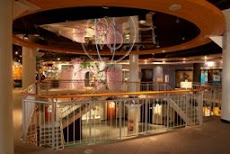
 Of course, when referring to seasons, it is important to remember that the Southern Hemisphere is different from the Northern Hemisphere; so when we are basking in the warm summer sun, those in the Southern Hemisphere are piling on their winter coats. Thus, while the Northern Hemisphere is tilted toward the sun (summer), the Southern Hemisphere is tilted away from the sun (winter).
Of course, when referring to seasons, it is important to remember that the Southern Hemisphere is different from the Northern Hemisphere; so when we are basking in the warm summer sun, those in the Southern Hemisphere are piling on their winter coats. Thus, while the Northern Hemisphere is tilted toward the sun (summer), the Southern Hemisphere is tilted away from the sun (winter).The equator, however, is a different story. Close to the equator, the seasons do not change in the traditional sense; the equator’s two seasons are the wet season and the dry season. In reference to temperature, the equator is like one continuous summer, but due to the frequent rain and humidity, the equator is actually NOT the hottest place in the world. The temperature in equatorial regions also varies with amount of precipitation and altitude. In fact, a small amount of snow lies on the southern slopes of Volcan Cayambe, a volcano that boasts the highest equatorial altitude, in Ecuador.

Let us know what your favorite season is!








